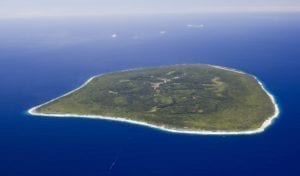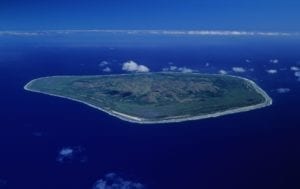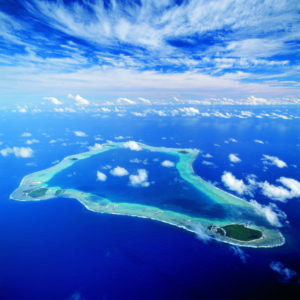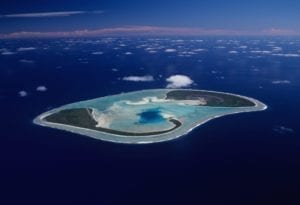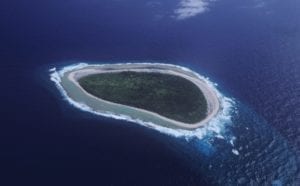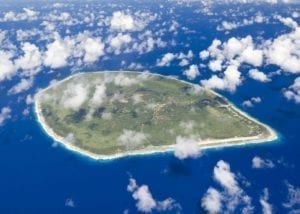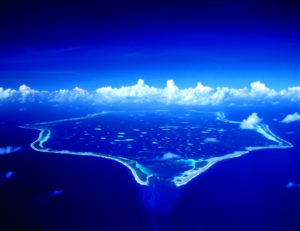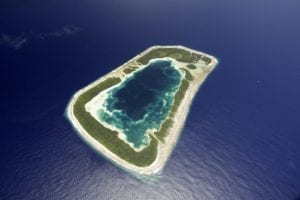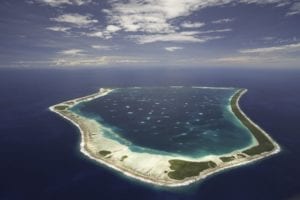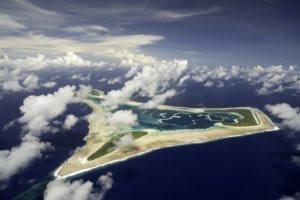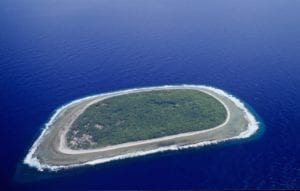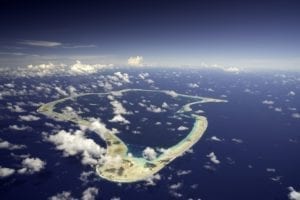Photo Credit – Ewan Smith
When most people think of the Cook Islands, they think of Rarotonga, the tropical jewel of the South Pacific where so many visitors have experienced wonderful holidays many times over. What some people don’t realise is that Rarotonga is just one of fifteen islands that make up the Cook Islands and they are all as brilliant and unique as each other.
We thought we’d introduce them to you all and tell you a little bit about what makes them so great!
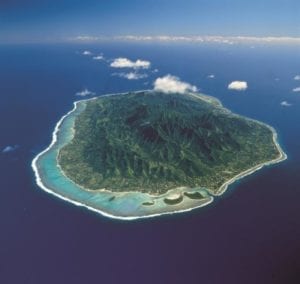
1. Rarotonga
We start off with the one everyone knows, Rarotonga, the most populated of the Cook Islands and home to the capital, Avarua. Rarotonga is well-known for its idyllic, white sandy beaches and tropical lagoons like the one off Muri Beach, the home of Pacific Resort Rarotonga and Te Manava Luxury Villas & Spa, which is perfect for swimming and snorkelling. It also has a variety of landscapes and natural attractions like the native bush track that leads up to the mountainous peak known as Te Manga, 658 metres above sea level.
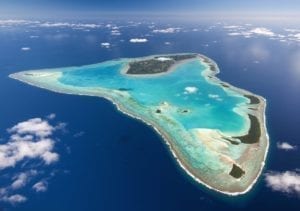
2. Aitutaki
The second most visited island in the Cook Islands is Aitutaki, the location of the 5 star luxury Pacific Resort Aitutaki, 40 minutes flight north of Rarotonga and home to around 2,000. Aitutaki is an atoll-like sanctuary that attracts the sort of traveller that appreciates peaceful bliss. Aitutaki was the first of the Cook Islands to adopt Christianity and has the country’s oldest church. An airstrip was also built during WWII when American and New Zealand soldiers were stationed here.
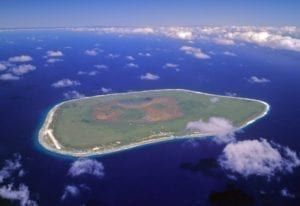
3. Mitiaro
With Mitiaro, we start looking at some of the Cook Islands you’re less likely to have heard of which we will hopefully change! Mitiaro is a small island, just 6.4 km across at its widest point and is found to the north of Rarotonga. It has a small population of less than 200 people spread across four villages on the island.
Mitiaro has a couple of large freshwater lakes though these aren’t the type for swimming as they are home to large populations of eel (which are a sight to see in their own right). Mitiaro does, however, have some beautiful limestone caves with crystal clear waters, which are fantastic to explore.
4. Atiu
Not far from Mitiaro, you’ll find Atiu, the third-largest island of the Cook Islands with around 400 people living there across five villages. Atiu is blessed with around 28 beaches, most of which remain as untouched as the day they formed. It’s one of the reasons why Atiu has become the third most visited island in the Cook Islands.
Atiu has an incredible array of birds and animals on display, the most in the Cook Islands. It’s ancient name, ‘Enuamanu’, actually means ‘the island of insects and animals’. They also have their own unique coffee, known as ‘Atiu Island Coffee’ made with roasted coconut cream which visitors just have to try.
5. Mangaia
Mangaia is the second largest island of the Cook Islands with a land area of around 52 km². The island is also estimated to be around 18 million years old and is said to be the oldest island in the Pacific.
Mangaia has some stunning natural scenery, characterised by native bush, freshwater lakes and steep cliffs. They also have some lovely rock pools and a fascinating network of caves that can be explored with knowledgeable locals. Mangaia also has its own unique dish that must be tried which is the Mangaian Donut, the biggest in the Cook Islands!
6. Palmerston
Palmerston Island is one of a number of small islets that rise above the coral reef it sits on with only 50 local inhabitants. Interestingly, Palmerston Island was the only island in the Cook Islands that Captain James Cook actually set foot on. It was uninhabited at the time and remained so until the 1860s when an Englishman called William Masters moved there with his two Polynesian wives.
With a third wife, Masters had 23 children and to this day there are over 1,000 descendants across Rarotonga and New Zealand which includes the 50 currently living on the island. It’s not an easy one to get to (with only the occasional boat) but those who have been speak adoringly about its magnificent lagoon and sea life.
7. Manuae
Manuae is a very small atoll of around 6 km² and made up of two islets. It was actually the first of the Cook Islands to be discovered by Captain Cook which was completely uninhabited at the time.
It has remained largely uninhabited throughout its history with only a few periods of people living there which include marooned sailors and an expedition of scientists who came to watch the total solar eclipse in 1965. It is now an important protected marine reserve for sea life which includes sea turtles.
8. Takutea
Another uninhabited island is Takutea, one that’s even smaller than Manuae at 1.2 km². It’s the only island in the Cook Islands that has never had a permanent population and is covered almost completely by coconut palm trees.
Like Manuae, it has been declared an important sanctuary for wildlife and is home to some incredible species of birds. This includes the red tailed tropicbirds and the red footed boobies. Feathers from the red tailed tropicbirds are also actually collected and used for traditional costumes all across the Cook Islands.
9. Mauke
Mauke is one of the most isolated of the Cook Islands, around 40 km away from Mitiaro, the closest island to it. It’s an island that’s about half the size of Rarotonga with a population of around 300 people living there at any one time.
It is an extraordinarily picturesque island, due in part to its fertile volcanic soils that have allowed tropical flowers, plants and trees to flourish there. Because of this, it’s known as the garden of the islands. It also has a number of freshwater caves with incredibly clear pools that you can go swimming in.
10. Penrhyn
The Penrhyn atoll is the northernmost island of the Cook Islands and lies 1,365 km northeast of Rarotonga. It has an extraordinarily large enclosed lagoon that encompasses some 223 km² making it one of the largest atolls in the Pacific.
The atoll is a tough one to get to because of its distance with flights and boat trips rare and expensive. It is, however, as picturesque as an atoll gets especially so when viewed from the air coming in. The island got its slightly unusual name from a ship called ‘Lady Penrhyn’ (which means ‘peninsula’ in Welsh) as it was the first ship to pass the atoll in 1788.
11. Rakahanga
Rakahanga is another part of the Cook Islands that lies deep in the northern group about 1,100 km away from Rarotonga, with a tiny population of around 80 residents. Rakahanga is actually made up of four main islands and seven islets which themselves are abundant with vegetation.
Rakahanga is also home to some very special animals species including the green sea turtle and coconut crabs. Another interesting fact is that the island is 100% solar-powered thanks to help from the EU and New Zealand government.
12. Manihiki
Another small atoll in the northern group is Manihiki made up of over 40+ islets with a population of around 500 people. The water in the lagoon is completely enclosed by these islets which is why it’s been so successful with its primary export, the black pearl.
Along with its black pearls, there is also a lot of marine life that call the atoll home like milkfish and parrotfish (both very tasty). There are weekly flights from Rarotonga to get to Manihiki and its friendly locals have redefined what it means to get away from it all.
13. Pukapuka
Pukapuka, another coral atoll in the northern group, was infamously known as ‘Danger Island’ because its reefs and surf made it notoriously difficult to land in. It is an atoll made up of 3 islets and like Manihiki has a population of around 500 people.
Culturally, it’s quite a distinct place as its people have their own language and customs, preserved over hundreds of years. English is rarely spoken in favour of their own language, Pukapukan and visits have to be planned with flights only monthly at best. One of the great things to do there is get involved in a game of kirikiti (Samoan cricket) which the locals have a real passion for.
14. Nassau
90 kms away from Pukapuka (and known as its sister island) is Nassau, just 1.3 km² in size with a population of around 70 people. In 1994 it was famously described by writer Elliot Smith, as “a small garden of Eden” due to the abundance and fruit and taro that grows there.
Most families in Nassau live in traditional thatched roofed houses which is consistent with the traditional way in which life is lived on the island. Visiting is very difficult and rare but if you do manage to, one of the most extraordinary sights to see is that of an old rusty cargo ship that shipwrecked there over 30 years ago.
15. Suwarrow
Last but not least, we come to Suwarrow, described by legendary author Robert Louis Stevenson as the most “romantic island in the world”. It is made up of 20 small islets around a lagoon that’s around 150 km².
Suwarrow is a declared nature reserve that is uninhabited besides two residents caretakers that are appointed every 5 years. Before this, however, it was solely occupied by a New Zealander called Tom Neale, a former sailor, from 1952 – 1977 who wrote a great book called ‘An Island To Oneself’ about his experiences. It’s another challenging place to visit but there is the occasional eco-tour that makes it way out there.
The 15 Fantastic Islands of the Cook Islands!
So there it is! The 15 wonderful islands of the Cook Islands that, as promised, are each as interesting and unique as each other. We hope you’ve enjoyed the read and hope that it inspires you to plan your next adventure to any one of these or maybe more!

